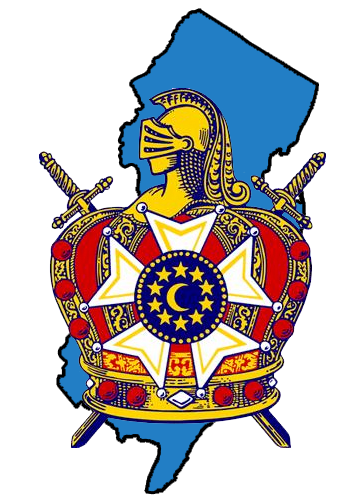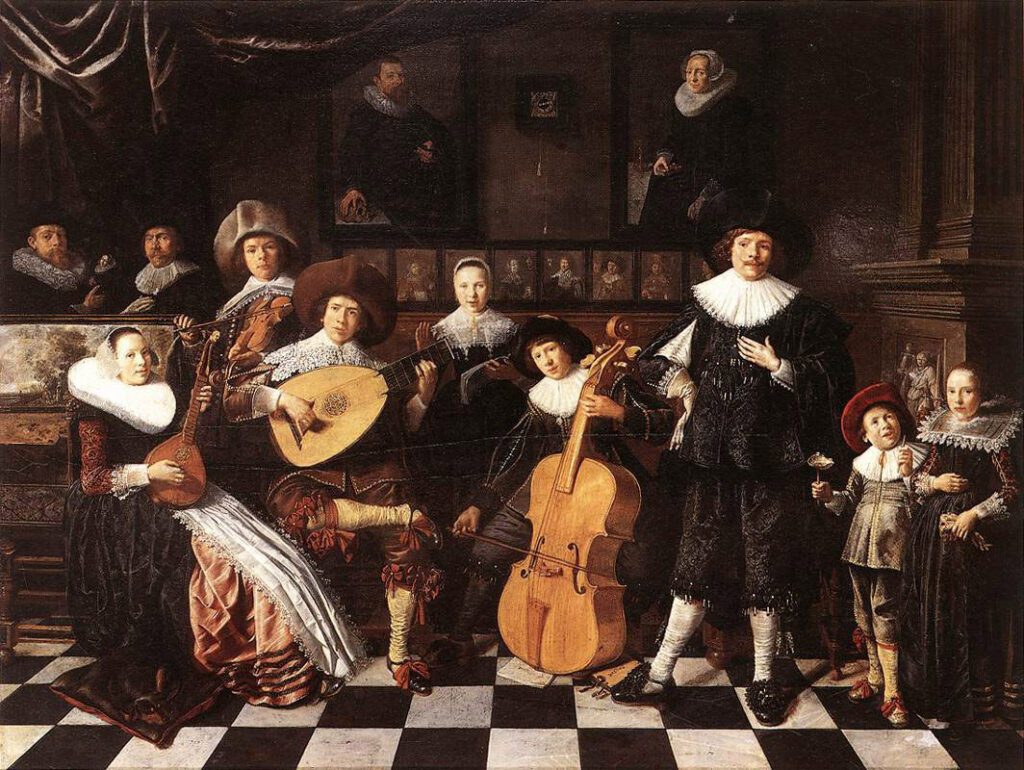Dad James Chwalyk is a Senior DeMolay and the Director of Scholarships (formerly Director of Education) for New Jersey DeMolay. He is also a full-time music teacher and professional musician. Dad Chwalyk can be reached via email at [email protected] for any questions or comments regarding this series.
OVERTURE
You’ve heard classical music before, but was it Classical music, with a capital “C?” Perhaps it was actually Romantic – though it had nothing to do with love – or maybe Baroque? (After all, as Cogsworth in Disney’s Beauty and the Beast always says, “If it’s not Baroque, don’t fix it!” https://www.youtube.com/watch?v=xJMtGhqPCW0)
Confused? You’re not alone. Many English speakers refer to music from the “common practice period” of Western music (c. 1600-1910) as simply “classical” (with a lowercase “c”). What they may not realize, however, is that those who study music usually divide this time into three somewhat distinct, larger eras. Even among scholars, there exists some debate as to when these begin and end, but for sake of ease, let’s go with the following:
The Baroque Era (c. 1600-1750)
The Classical Era (c. 1730-1820)
The Romantic Era (c. 1800-1910)
…and yes, those do overlap! Good catch!
Other areas of unfamiliarity seem to include the titles of such pieces, who wrote them, and what distinguishes the music of these eras from each other. Do you think you can name some pieces? (Or can you just “hum a few bars?”) Do you know any of the composers? What makes these eras unique? Might some of these pieces work well during ritual? Let’s find out!
What follows is Part I of a three-part series by Dad Chwalyk titled “classical Music Every DeMolay Should Know!”
PART I: THE BAROQUE ERA
Ah, the elegance of the Baroque! Europe had finally come to realize that our planets do, in fact, revolve around the sun, and that all of the brilliant mathematical, scientific, and artistic discoveries of the previous Renaissance period were destined to continue and improve their quality of life for the foreseeable future. “On with the music!” they cried, presumably in several young Romance languages. (Note: this use of “Romance” comes from the fact that these languages came from the Western Roman Empire. More on that in Part III!)
Music of the Baroque era is distinguished by its elegant, flowery, and highly ornamental nature in contrast with its simple harmonies and relatively small orchestras containing primarily string instruments along with just a few brass, woodwind, or percussion instruments for color, but also utilizing a more complex compositional texture, in which instruments sometimes imitated one another, for example, in a fugue, which is a type of counterpoint that – what? Oh. Never mind – put on your doublets and breeches as we prepare for TEN BAROQUE PIECES EVERY DeMOLAY SHOULD KNOW!
10.) Bach: Cello Suite No. 1 in G Major, BWV 1007 – 1st Movement: Prelude (https://www.youtube.com/watch?v=PCicM6i59_I)
Even if you’ve never studied the cello, there is no doubt that you’ve heard this thing somewhere. Johann Sebastian Bach (1685-1750) is going to appear on this list a lot, and for good reason! He was one of the greatest composers who ever lived. (You are free to call that my opinion, of course, but I challenge you to ask anyone who has studied music for their “greatest composers” list, and if this guy’s missing, please have them call me – I’d like a good word.) Bach is revered for his use and recording (in writing) of most of the basic practices still employed in music theory and composition today. It is reasonably safe to say that without Bach there would have been no jazz, rock, pop, hip-hop, country, or ANY other contemporary genres of music the way we know them. The first movement of this piece is no exception to that legacy, with its clean outlines of the individual chords (arpeggios, if you will) and an incredible amount of expression evident in even the simplest of musical ideas from this “German genius,” written for just one instrument. This is a great introduction to Baroque music that could work well in a serious chapter setting.
9.) Händel: Water Music – Suite in D, HWV 349 – 2nd Movement: Alla Hornpipe (https://www.youtube.com/watch?v=1h4mAceHmrI)
George Friederich Händel (1685-1759) was born in the same year as Bach, also in modern-day Germany, but the two never met. Usually considered second only to Bach as a compositional “titan” of the Baroque era, Händel wrote his Water Music at the request of King George I of Great Britain and Ireland, who wanted to hear a concert on the River Thames. Händel’s orchestra of 50 or so musicians (big for that time) were stationed on a boat near one side of the river and played this long collection of three suites as the king’s boat passed on the other. So pleased was the king, he supposedly asked Händel’s orchestra to perform them three more times that evening! The concert started at 8 pm and lasted until well after midnight. “Water music,” indeed!
8.) Bach: Orchestral Suite No. 3 in D Major, BWV 1068 – 2nd Movement: Air (“on the G String”) (https://www.youtube.com/watch?v=CLk8OILr72U)
This one requires a little bit of explanation: Bach’s original work was only titled “Air.” In the late 1800s, August Wilhelmj, a German violinist, rewrote it as a violin solo and one step lower (in C Major instead of the original key of D), which meant the soloist could perform the entire melody using only one of their four strings – G, which is the lowest. As a result of this, since the violin in its low range is much softer, Wilhelmj also took it upon himself to reduce the roles of the other instruments slightly as well. It worked. “Air on the G String,” as his new arrangement came to be known, repopularized the work and it has remained popular ever since. Bach still gets the credit for writing it in the first place, though! Be sure to provide tissues in case you use it well.
7.) Händel: Solomon, HWV 67, Act III: Sinfonia (“Arrival of the Queen of Sheba”) (https://www.youtube.com/watch?v=-TGKJ9MgCOQ)
Written as the opening number for the final act of his oratorio telling the story of King Solomon, “Arrival of the Queen of Sheba” is often played in connection with British royalty. As an example of the piece’s continued longevity, consider that it was used in the 2012 London Olympics opening ceremony when “James Bond” (played by Daniel Craig) went to meet Queen Elizabeth at Buckingham Palace. And if you’ve noticed an obviously “British” theme in Händel’s music, you’re not wrong – he moved there in 1712 and became a naturalized British subject in 1727.
6.) Jeremiah Clarke: Prince of Denmark March (“Trumpet Voluntary”) (https://www.youtube.com/watch?v=z1088E6E2fY)
Speaking of royalty, few royal marches or fanfares can claim greater popularity than the “Trumpet Voluntary,” an informal name given to the relatively unknown Jeremiah Clarke’s “Prince of Denmark March.” It is also the first piece on our list not part of some larger work, making it one of the greatest and truest “one hit wonders” of all time! Fun fact: this work was performed at the wedding of Lady Diana Spencer (“Princess” Diana) to Prince Charles in 1981. It might also make a great entrance march for someone important in your chapter room!
5.) Bach: Toccata and Fugue in D Minor, BWV 565(https://www.youtube.com/watch?v=ho9rZjlsyYY)
A staple of haunted houses everywhere, I would argue no singular piece of organ music is as instantly recognizable as the Toccata and Fugue in D Minor. For an average of about nine minutes, Bach’s transformative work takes the listener on a sonic journey through intense musical and melodic structures seamlessly positioned to provide the perfect balance of predictability and suspense. Carefully selected quotes from this piece could easily enhance sections of a DeMolay Degree if done right.
4.) Vivaldi: The Four Seasons, Concerto No. 1 in E Major: “Spring” (https://www.youtube.com/watch?v=02IaSemiGb4)
Red-head Antonio Vivaldi was a Venice-born composer, virtuoso violinist, teacher, and clergyman. The Four Seasons is undoubtedly his greatest and most popular work, particularly the “Spring” concerto, which is still in popular use today as a common ring- and ringback tone and has been quoted in numerous other works in various genres. (Check out this wonderful Japanese usage, for example, just over one minute in: https://www.youtube.com/watch?v=AYdFdhWlXIQ) Throughout the entire 45-minute work, we hear Vivaldi describe the conditions of each season through perfect Baroque instrumental composition sure to add a touch of elegance to any chapter occasion – if you can just find the seasonable moment!
3.) Bach: The Well-Tempered Clavier, BWV 846: Prelude in C Major (https://www.youtube.com/watch?v=7ZNXBpO-uEo)
If you or someone you know has ever taken piano lessons, it would be a pretty safe bet to make that they’ve heard, seen, studied, or even played this piece of music. Even if they haven’t, there’s a good chance they’ll recognize it by ear. The Prelude in C Major is often described as being one of the quintessential piano works for amateur performers ever to be composed, and by none other than the great Bach himself no less! Consider the expression he manages to elicit from simple arpeggios yet again, just as in our first example. It isn’t terribly difficult to learn either, as long as you can read music. It would be great if someone in your chapter could play it live for an event!
2.) Händel: The Messiah, HWV 56: “Hallelujah” (https://www.youtube.com/watch?v=IUZEtVbJT5c)
The very mention of the word “Hallelujah” is often enough to evoke the sound of this Baroque masterpiece in many minds of mankind. Ubiquitous worldwide, particularly in the Christian faith during the Christmas or Easter seasons, it is so renowned and respected that audience members still traditionally stand when it is being performed, a tradition dating back, uninterrupted, for 277 years since King George II of England first stood up at this point in The Messiah during its 1743 London premiere. (What we don’t know however, is why he stood. Since the complete work is sometimes three hours long and “Hallelujah” occurs at about two hours in, it’s quite possible he just needed to stretch – but that wouldn’t make for a very good story, would it?)
1.) Pachelbel’s Canon in D (https://www.youtube.com/watch?v=JvNQLJ1_HQ0)
“What’s that?” you ask. “Johann Pachelbel’s Canon in D is number one? How could that be?” Perhaps, to you, it’s that nice wedding piece, or that part they play at ceremonies when people are walking in, walking out, or receiving certificates and their pictures are being snapped. Maybe you know it as the piece that famous Vitamin C graduation song is based on (https://www.youtube.com/watch?v=foyAOoVagWw) or that Trans-Siberian Orchestra Christmas song from the radio (https://www.youtube.com/watch?v=4cP26ndrmtg). You might have realized it’s the underlying chord structure of that new Maroon 5 song, “Memories,” (https://www.youtube.com/watch?v=SlPhMPnQ58k) or Sally’s chorus from “Don’t Look Back In Anger” by Oasis, (https://www.youtube.com/watch?v=cmpRLQZkTb8) or perhaps you’re really old school and it’s from Aerosmith’s “Cryin'” (https://www.youtube.com/watch?v=qfNmyxV2Ncw). Maybe you like folk music, so you know it from Billy Jack’s “One Tin Soldier” (https://www.youtube.com/watch?v=YH0eHzTKEMY). Maybe you’re a “Blues Traveler” kind of guy so you first heard it in “Hook” (https://www.youtube.com/watch?v=xa6rq9bZCrY). The point is, you’ve heard it. These chords – and their limitless potential – are not going to go away any time soon, because they haven’t since the piece was rediscovered.
I look forward to sharing more with you in our next installment, where I explain the transition from this early classical Baroque period to the one true Classical era. So, as my music teachers always told me… “STAY TUNED!”





Comments are closed